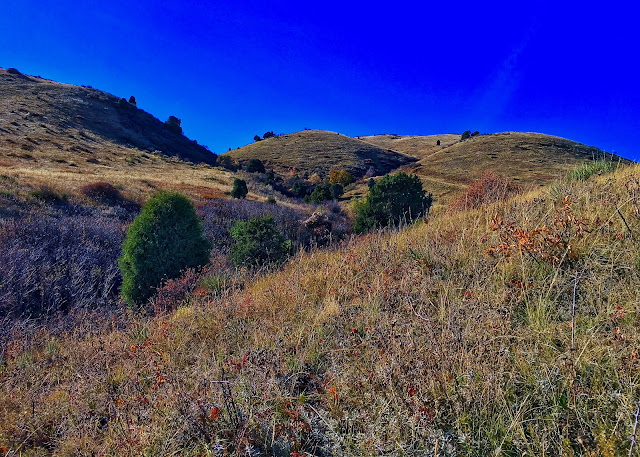Mount Vernon Towne - Gateway to the Rockies
 |
| Mount Vernon townsite |
Just south of where Interstate 70 curves west and begins its climb up into the Rockies, Matthews/Winters Park preserves a splendid plateau and a fascinating past. It’s a unique location because it’s the exact point where the high plains meets the mountains.
The place was first settled in 1859 by an entrepreneurial clergyman named Joseph Casto who hoped to make a profit from the burgeoning gold rush. Second to arrive was a lawyer from Nebraska named Robert Williamson Steele who called the area Mount Vernon after George Washington’s estate in Virginia.
Casto platted the hillside and encouraged development of the small village that became known as Mount Vernon Towne. Casto also started the Denver, Auraria, and Colorado Wagon Road Company, which built a toll road from Denver through Mount Vernon and up the canyon to the gold fields at what is now Central City and Blackhawk.
Almost overnight Mount Vernon was transformed into a thriving transportation hub as the fledgling community swelled to over 200 souls. In 1859 the region was considered Kansas’ western frontier where there was a lack of government and lawlessness reigned.
Frustrated citizens decided to take matters into their own hands and voted Robert W. Steele as governor of a new district named Jefferson Territory after our third president, Thomas Jefferson. As the territorial capital with an endless stream of wagons passing through on their way to the mining camps, Mount Vernon enjoyed immense prosperity.
Unfortunately, the town’s string of good luck only lasted for about two years and after that it suffered from a gradual decline. In 1861, Steele was forced to give up his post because Congress created Colorado Territory and Abraham Lincoln installed William Gilpin as its first governor.
After Steele’s house burned down, he moved a few miles north to Apex and invested in another toll road that ascended Apex Gulch. Travelers also discovered a couple of gentler, alternate routes through the foothills via Platte Canyon or Clear Creek Canyon so in 1864, Casto bolted before things bottomed out.
Once the stage traffic ceased, Mount Vernon’s status as a political and transportation center was dissolved. While Mount Vernon experienced hardship, nearby cities like Golden and Denver rose to prominence, turning the lovely hamlet into a virtual ghost town.
Interestingly, in the twentieth century Mount Vernon Canyon re-emerged as an important traffic artery. In 1937, U.S. Highway 40 was routed along the north side of the gorge and during the 1960s, I-70 was built right over the top of the old toll road.
Because of the extinct township’s historical significance, it was saved from the destruction of modern development. Thanks to the Matthews family, Winters family and Jeffco Open Space, the area has been preserved and has become a paradise for hiking, running and mountain biking.
If you visit the site today the only thing left standing is a few grave markers set in one of Colorado’s oldest cemeteries. When you’re there it feels like a fitting tribute to the tiny boomtown that once billed itself as “The Gateway to the Rockies”.
 |
| A splendid plateau |
 |
| A unique location |
 |
| The territorial capital |
 |
| Mount Vernon enjoyed immense prosperity |
 |
| Historical significance |
 |
| A paradise for hikers |
 |
| One of the oldest cemeteries in Colorado |



Comments
Post a Comment